Animation Extracts #02: Timothy Williams Podcast (September 2014)
Between now and late October there’ll be a succession of podcasts – at least seven – each of which will contain a handful of animated backgrounds and textures to support either music cue excerpts, or offer background material during the course of the Q&A.
For the latest podcast with composer / orchestrator Timothy (Tim) Williams, there are three main sections that contain visual material: the Intro, the Midsection (really two-thirds to the end), and the wrap-up. The music extracts are from his latest soundtrack release – the Mario van Peebles-directed actioner Red Sky (2014) – which is available from Lakeshore Records. (Williams also scored the drama Walking with the Enemy and the upcoming sci-fi film Debug.)
Before I get into the animated montages, I should stress that you should either have listened to the podcast, or at least watched extracts to first see the finished work before its deconstructed.
Here’s the podcast archived on YouTube:
And here’s the selected animated montages on Vimeo in 720p:
The Timothy Williams podcast montages were filmed with a 1991 Panasonic D5100 single CCD camera, which still seems to have some usefulness and value because it’s rugged design makes it one tough little camera; and b) it was designed as a multi-purpose camera.
WARNING: the following series of paragraphs feature practical yet techie talk of various models. Those who find such minutia rather dull should scroll down until they see pretty pictures.

The D5100 is straight industrial camera that produces a crisp colourful image; it features a detachable bayonet lens; and was also designed for security use with an optional remote-controlled head. The camera also features selectable shutter speeds (from 1/100 to 1/2000), and Panasonic made a low-light model (the D5100HS) which was likely embraced by security outfits, if not community TV ENG use.

Panasonic also offered a shoulder pad/grip containing features already present on the WV-3240 and similar vintage consumer cameras – buttons to control an attached VCR, neg / pos button, rudimentary date/time/counter, fading to/from black/white, and a handgrip with record on/off and zoom control.
The camera’s downside: you still need a separate recorder. (I suspect this was the last of Panasonic’s non-dockable, single chip- cameras, as with the exception of the selectable shutter speeds, this seems to be the CCD equivalent to the single tube Newvicon WV-3500. The D5100 – a sucessor to the D5000 – is very modular which allows one to swap lenses, grips, viewfinders, auto-focus adapter, and assorted power / genlock adapters offering BNC composite and RGB outputs.)
The D5100 is powered by a 14-pin plug, and features a 10-pin plug that seems to be yet another differently sized version of the smaller and larger equivalents used by JVC. (Must there be a third?)
It outputs a Y/C signal from a SVHS plug, but if you’ve connected the camera’s 14-pin cable to a power supply that only outputs a composite BNC signal, make sure the camera’s switch is set to composite, or the image will be in B&W.
Unlike the WV-3240 Newvicon tube model, the viewfinder can’t be angled sideways after it’s slid out, and perhaps more annoying, although the D5100 shares the same bayonet lens mount as the WV-3240, the plug for controlling the auto aperture through the camera is more multi-pin, so unless you’re swapping to a lens that has a manual aperture knob, the aperture will remain closed.

Panasonic, though, seems to have offered at least three optional lenses for the D5100: 8x (10.5-84mm), 12x (10.5-126mm), and 15x (10-150mm) zoom lenses with macro features.
So why bother with a sturdy camera that somewhat limits one’s ability to interchange more versatile (and better) lenses? Certainly when paired against my old Sony V-801 prosumer Hi8 camera (about the same vintage), the D5100 wins hands down for picture sharpness, and there are those modular parts which, depending on what you track down on Ebay, can render the camera into a genlocked RGB, Y/C or composite camera.
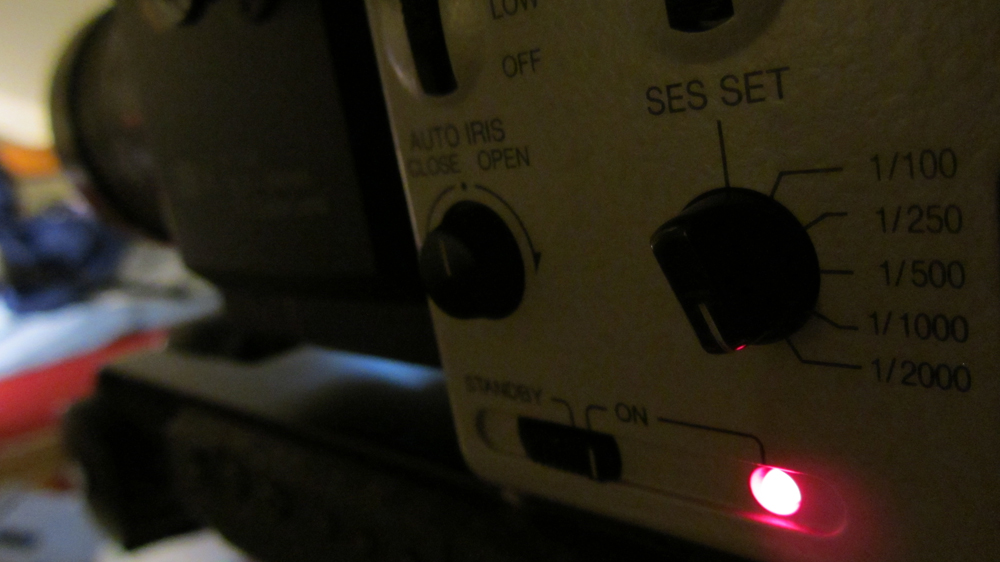
It’s also rather light (the WV-F250 model, even without a dockable battery, weights a ton) and unlike the D5000 model, this baby has that variable shutter knob. (In fairness, my Sony V-801 had one, too, but it seems its ability to go beyond 1/2000 relies more on digital processing, and when coupled with a lower resolution, the final image wasn’t that great.)
Anyhow, now that I’ve gone through the dry stuff, let’s move on to the source of the visuals: cornmeal.
Because Red Sky takes place partly in Afghanistan (and there’s sand), I wanted to use something that was granular, and could be manipulated while being filmed to avoid the hassle of frame-by-frame animation using After Effects; it’s not laziness, but time. If there’s a way to achieve similar or better results by starting with real material, why go through the trouble of creating fake sand?
I also wanted to try out an idea using woven patterns, which I did later craft into a minute-long test that looked interesting with variable strands moving in different speeds and directions, but it wasn’t suitable for Williams’ music.
Governing Rule #1: the images have to be somehow related to the music, if not the images or locations that inspired the music.
Governing Rule #2: whether it’s one shot or a series of shots, after the core visuals are gathered, no reshoots or inclusion of new images. I have to work with what I’ve got and figure out how to get out of a corner if something isn’t working. One of the podcasts coming soon features a composer who, to my delight, shares a somewhat similar philosophy that’s not exactly minimalism, but forces problem-solving by restricting resources after the core tools have been carefully chosen.
Enter cornmeal.
I tried small, medium, and large sieves pouring into a bowl, with each stream filmed against a dark background. I made use of the camera’s 1/2000 shutter setting because I wanted peculiar details, and boosted the gain to get great, noise, and help with the larger amount of light required to get an image.
I’ve a tube camera with a high-speed mechanical shutter which I used to shoot swirling water bubbles. The only way you can photograph an image at 1/10,000 is to put a painfully bright bulk close to the subject. I got a great image, but Jesus, the light must be close to the subject, and you have to make sure the image is neither too dark nor blown out to get detail and colour. I chose cornmeal because I like its coarser texture than flour, and being yellow, it won’t add unwanted hot spots. The corn grain + video noise also offer more textures to play with in Premiere, resembling TV snow but not as easily identifiable.
Here’s a visual narrative of the pouring cornmeal used for the first music cue (at the podcast’s Intro) as shot at 1/2000 with the D5100, and the final greenified images:

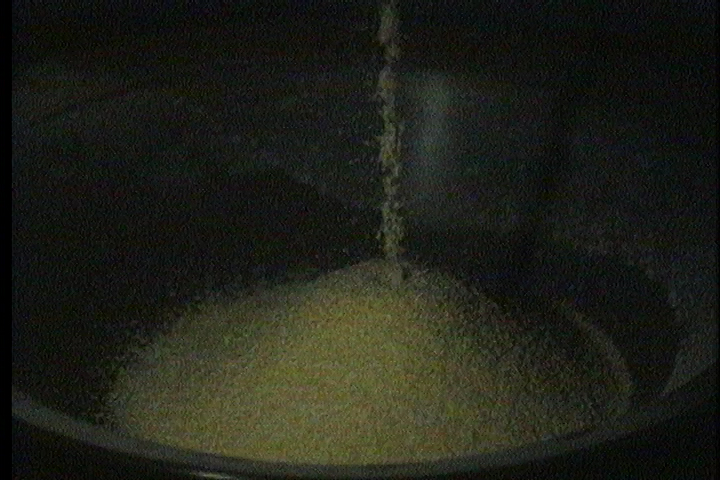

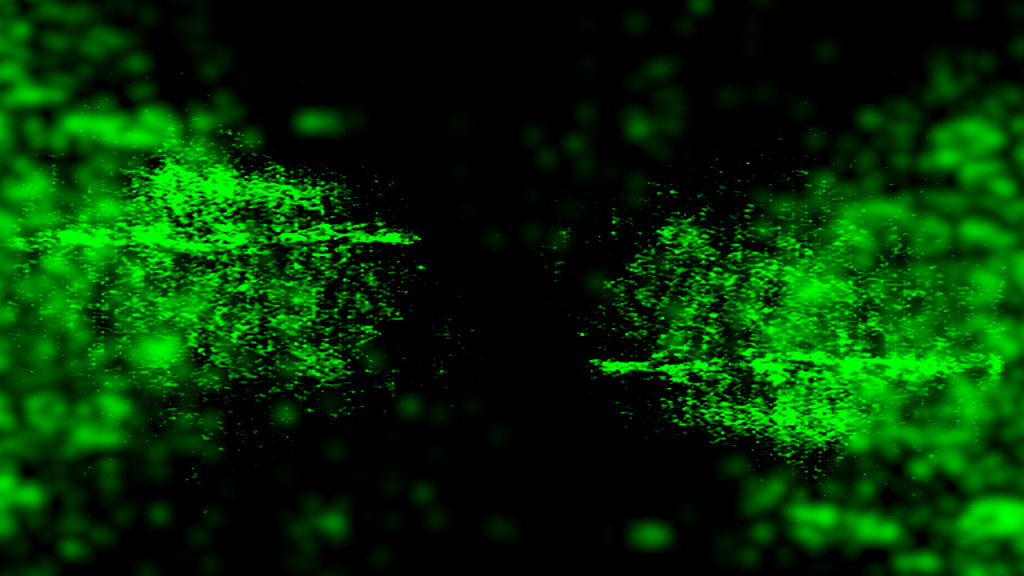
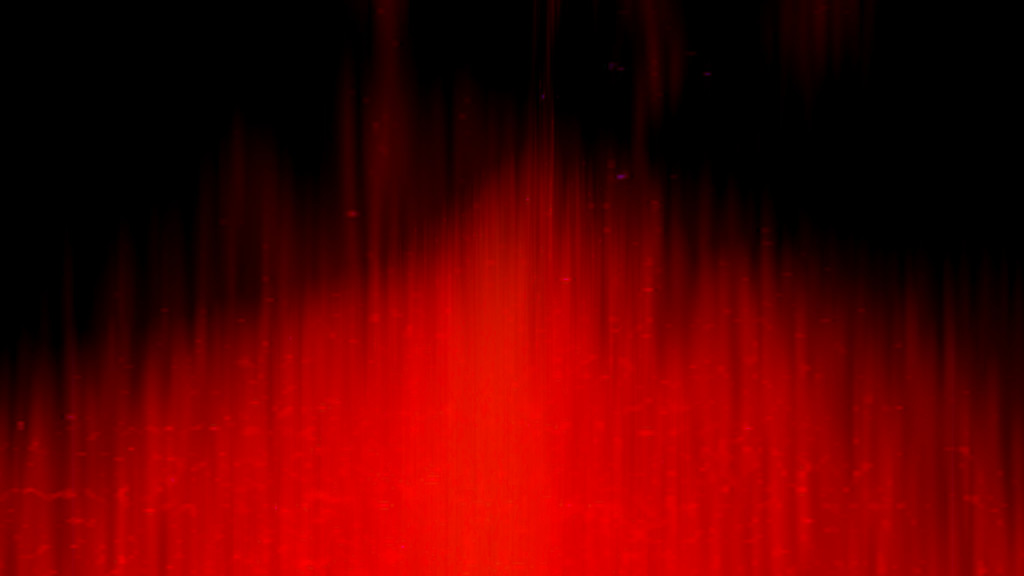
For the midsection where the second cue appears, the montage ends with red matter derived from the pouring mound of cornmeal (see above), but the shots that precede the fiery breast matter were derived from pouring cornmeal widened with my finger, then processed with colours and settings and layers in Adobe Premiere:
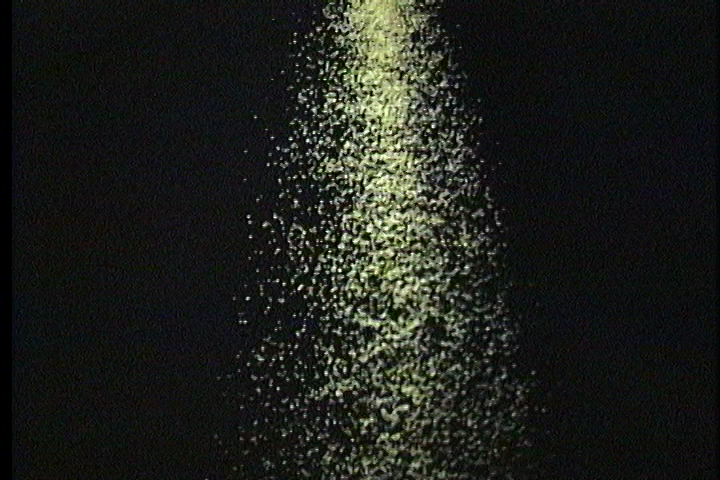
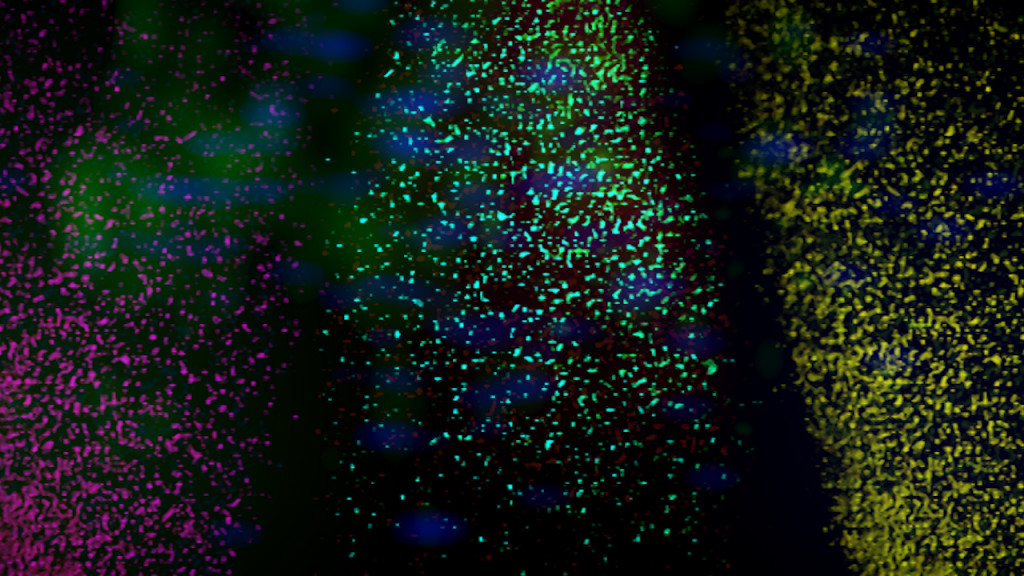

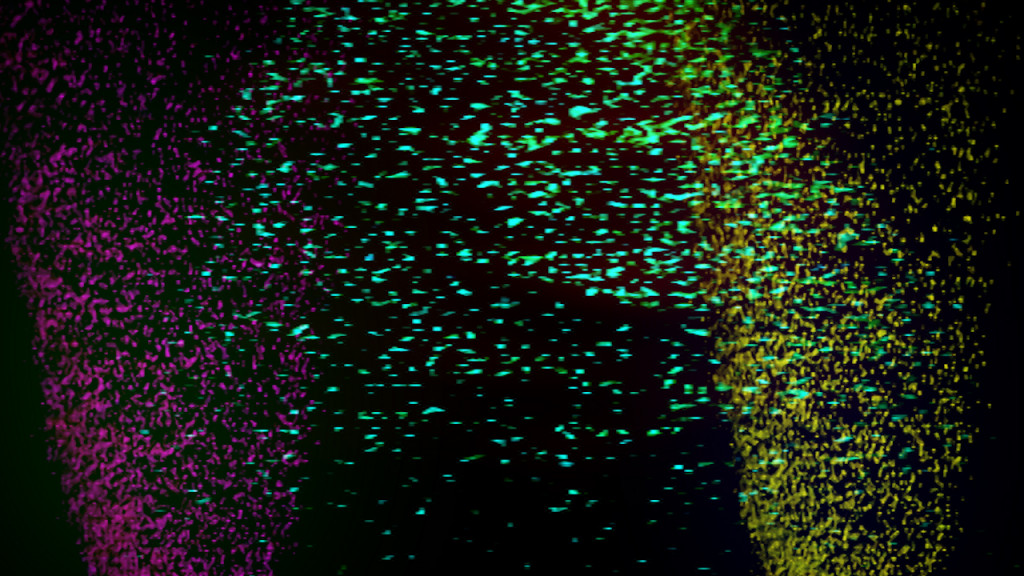
For the third and final montage that appears at the end of the podcast prior to the End Credits, I wanted to evoke wavy jet streams, so the solution was pouring cornmeal, disrupting it with a single chopstick, and combing the differing strands to great a whirling swirl of granular matter:
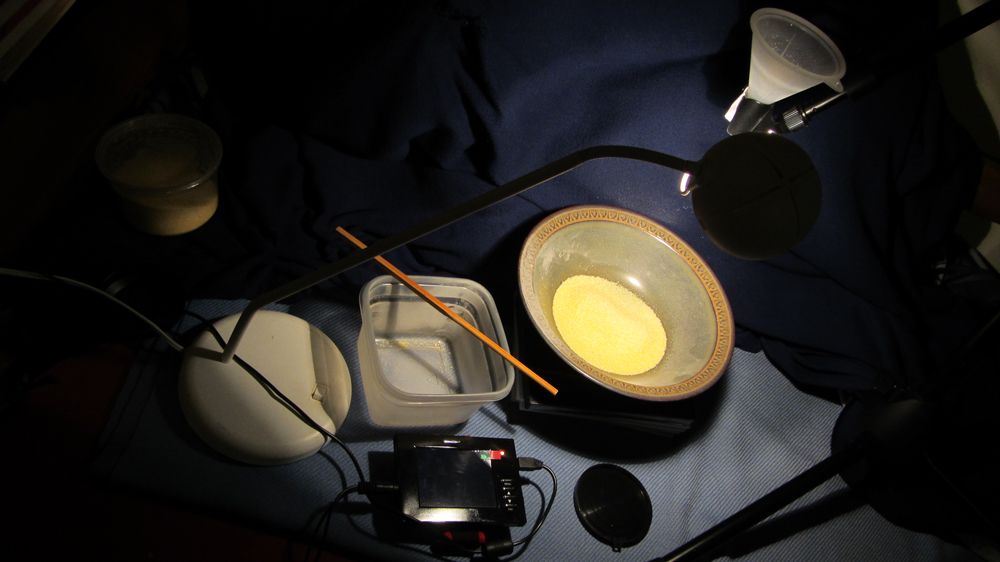
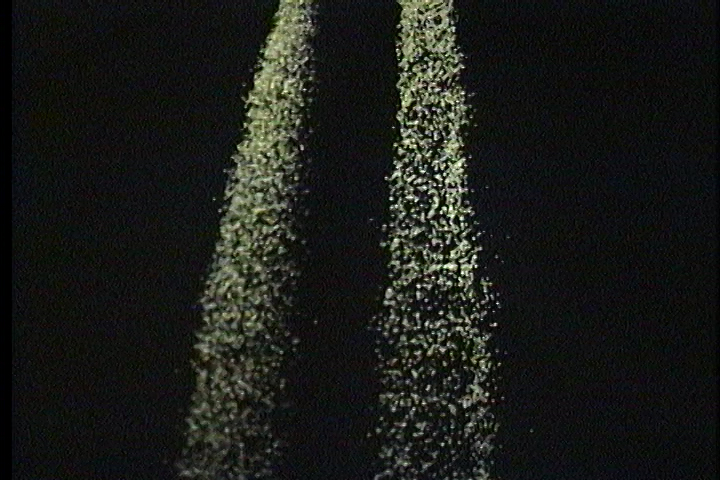
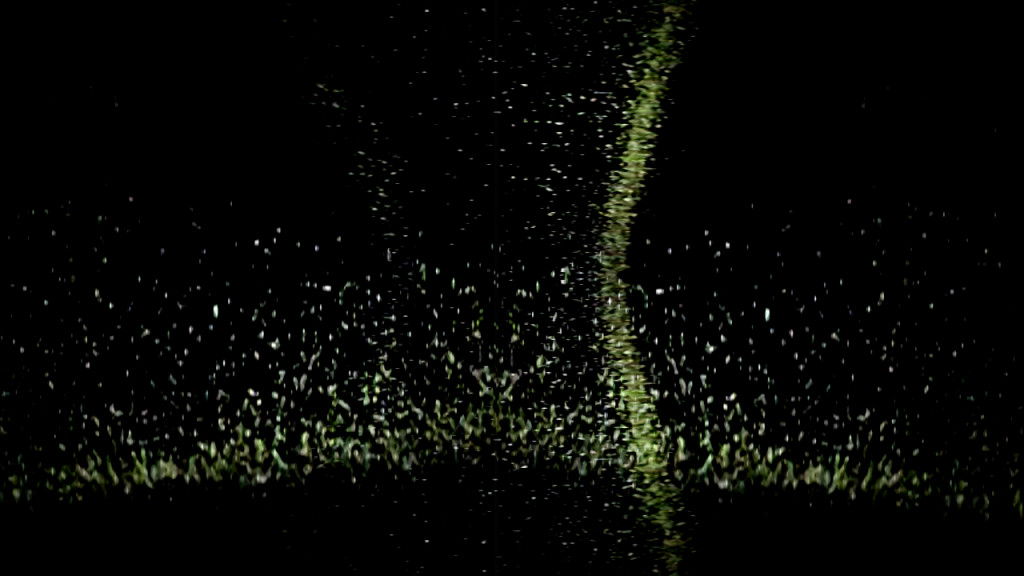
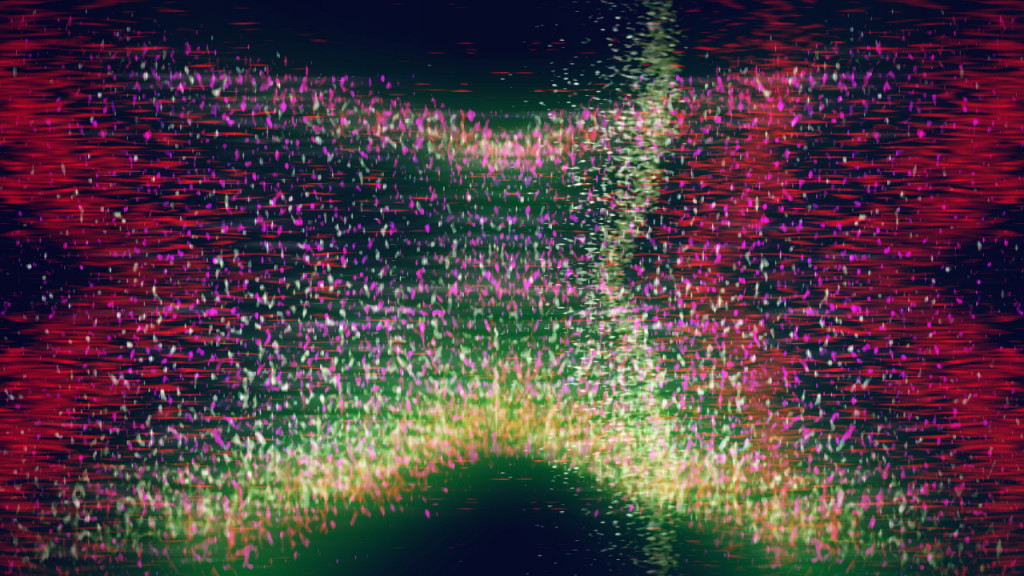
Weirdly, the swirling coloured matter above resembles some rotoscoped animation from the 50s. Maybe it’s the colours and the chosen speed setting.
As mentioned at the beginning, the original idea was to create video grain using organic grain using a high-speed camera, and this footage of a singular strand was tested out with trippy effects wholly wrong for the music:

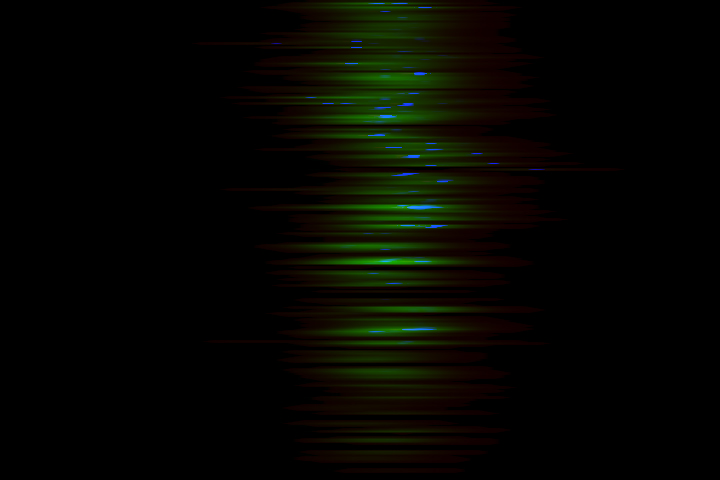
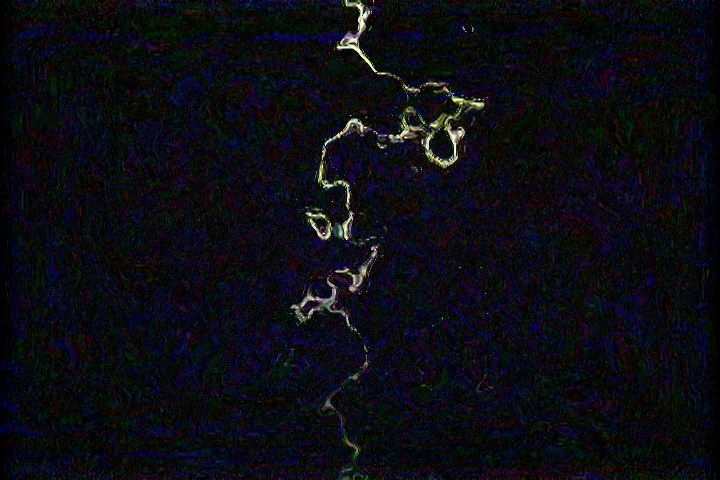

The lattice pattern I’ll revisit later – there’s some interesting directions I can take it – but given the time alotted this week, I’m okay with most of the choices.
In any event, this is the first of several blogs to follow thru October, covering the cameras and the animated montages used in my podcasts. Thanks for reading!
Cheers,
Mark R. Hasan, Editor
Big Head Amusements
